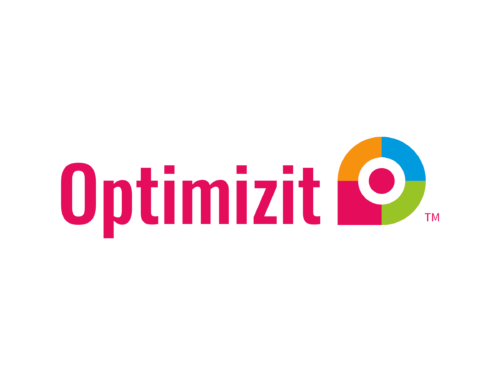Every time search engines update their algorithms, it can feel like a whirlwind has hit your digital marketing efforts. For many, these updates are baffling mysteries, suddenly dropping website rankings or altering traffic flows. Understanding how to recover from these changes and prepare for the next wave is a necessary part of managing a successful online presence. It’s not just about adapting once; it’s about continual learning and improvement.
Picking up the pieces after an algorithm update is crucial to maintaining stability and progress in your online strategies. It requires an agile mindset and a willingness to adopt new tactics. Staying on top of the game with effective digital marketing strategies helps you bounce back and sets your website up for future resilience.
Understanding Algorithm Updates
Algorithm updates are changes made by search engines to improve the quality and relevance of search results. These updates can be minor tweaks or major overhauls, each aiming to refine how content is ranked and served to users. The end goal is to deliver search results that best match what users are looking for.
Several types of updates frequently occur. Some focus on content quality, ensuring that only trustworthy and relevant information reaches users. Others address technical aspects like mobile-friendliness and site speed, ensuring a smooth browsing experience. Then there are updates targeting links, which evaluate the credibility and authenticity of backlinks leading to your site.
These updates can significantly impact digital marketing strategies. A change in algorithm can suddenly shift your website’s rank, affecting visibility and traffic. For instance, if your site relies heavily on certain backlinks that an update deems low-quality, you could see a drop in search rankings. Understanding these impacts helps in realigning your digital strategy to be more in tune with current standards.
Knowing these nuances starts with a deep dive into your website’s health and performance. This means conducting regular audits, not only when your rankings drop but as a preventive measure. Here’s a practical approach:
Audit Your Website:
– Look into site structure. Is it straightforward for search engines to navigate?
– Evaluate content quality. Does your content provide real value, or is it just stuffed with keywords?
– Test user experience. Is your site mobile-friendly and quick to load?
By continuously updating your knowledge and adjusting your website to meet the new algorithm standards, you are not left scrambling during the next update. This proactive approach ensures that your digital marketing efforts remain effective and undisturbed as the search engine landscape shifts.
Strategies to Recover from Algorithm Updates
When it comes to bouncing back after an algorithm change, focused strategies make all the difference. One key step is conducting a thorough website audit. This review should involve examining your site structure for ease of navigation, evaluating the quality of your content, and ensuring that users have a smooth experience from start to finish. Identifying these areas aids in immediate recovery and aligns your site with the criteria of the most recent algorithm.
Next is high-quality content creation. Fresh, relevant, and valuable content keeps your audience engaged and satisfies search engine standards. Here are some simple steps to enhance your content:
– Identify user queries and provide insightful answers
– Use clear and engaging language with appropriate keywords
– Regularly update or refresh existing content to keep it relevant
Alongside content, user experience (UX) takes center stage. UX matters, especially after algorithm updates. It’s time to pay attention to website navigation and load time. Ensure your site is mobile-friendly and doesn’t keep visitors waiting. An example of improving UX might include reducing the number of times users have to click to get to the information they need. Simple changes can significantly enhance a visitor’s experience, making it likely they’ll return.
Finally, keep a close watch by monitoring and analyzing traffic data. Utilize analytics tools to track how your website performs post-update. This allows you to pinpoint what strategies work and what might need tweaking. Being proactive with data means you can adjust your approach before it becomes a problem.
Long-term Digital Marketing Strategies
Once you’ve tackled the immediate recovery steps, setting up for long-term success is next. It’s crucial to stay on top of SEO trends and continuously adapt. This requires a commitment to ongoing learning about SEO best practices. Dig into resources like reputable SEO blogs, expert webinars, and online courses. They keep you in the loop about the latest changes and help fine-tune your strategies.
But remember, don’t put all your eggs in one basket. Building a diversified traffic stream is about exploring broader opportunities. Think of engaging audiences through social media, email marketing, and even guest blogging. This approach means you’re not simply relying on search engines to bring visitors to your site. By embracing a multi-channel strategy, you create a more resilient online presence.
Wrapping Up Your Recovery Plan
In navigating the world of digital marketing, staying adaptable to algorithm changes is a must. Begin with a thorough website audit and strengthen content quality. Enhance UX and leverage data analytics to fine-tune your approach. A long-term view encourages ongoing SEO learning and the exploration of diverse marketing channels.
Digital landscapes shift perpetually, making it important to remain nimble and forward-thinking. Empower your strategies with the insights shared above to ensure you’re always one step ahead. For expert support in handling these challenges, turn to reliable digital marketing solutions that cater to your unique needs.
Stay ahead in the dynamic arena of online digital marketing by making the right choices that keep your strategies effective and up-to-date. Discover how Optimizit can help you achieve this by optimizing your approach. Contact us today for expert insights and personalized solutions that align with your unique needs and objectives.

